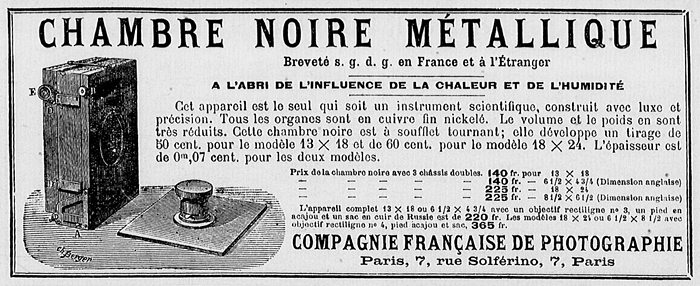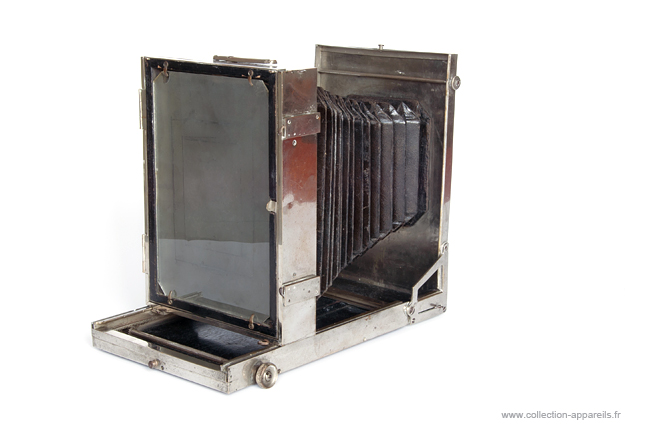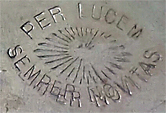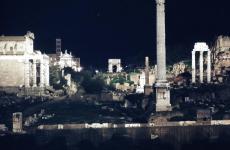|
Compagnie Française de Photographie Chambre noire métallique |
Manufactured or assembled in France from (Circa) 1886 to (Circa) 1889.
Index of rarity in France: Rare (among non-specialized garage sales)
Inventory number: 13422
See the complete technical specifications
Chronology of cameras Compagnie Française de Photographie
Per Lucem, Semper Novitas
Here is one of the very first cameras made of metal. While there had been some metal cameras before, such as those by Voigtlander in 1841 and Bertsch in 1860, these were not bellows cameras.
This one was released in 1886 (patent dated April 24, 1886) and is the elder sister of the Photosphère (released in 1888).

Its creator, Napoléon Conti, aimed to build a camera that was lightweight, sturdy, and resistant to the extreme conditions of tropical climates. To achieve this, the entire structure of the camera is made of nickel-plated copper, with only the base being made of mahogany for purely aesthetic reasons, as it is surrounded by the metal structure and serves solely for the tripod mount. Removing this wooden part would not affect the camera's functionality.
The front face is also made of mahogany, but it is actually a lens board covering the entire surface. This part can be removed, revealing the entirely metal front part that includes the bellows rotation system.
The bellows extension is adjusted by moving the back through 10 different positions, using small notches on the metal base frame. The position is locked with two small locking levers. This operation can be performed in both vertical and horizontal positions. The focus and maximum extension, approximately 45 cm, are achieved by moving the rear body using two knobs and a rack-and-pinion mechanism.
The camera is extremely rigid and well-constructed. It is lightweight and very compact when folded. Without the lens, it weighs 1800 grams.
Although advertisements from that time indicated that the camera was available in 13 x 18 or 18 x 24 cm, the only known models are 13 x 18. The 18 x 24 may have never actually existed.

(Source: Gallica La Science illustrée June 1888)
Originally, the camera was sold either without a lens, with two lens boards and three double-sided plate holders, or complete with a Rectilinear No. 3 lens.
On this particular example, a lens signed by René Koch has been mounted with a single curtain shutter without any apparent brand, but with mention of a German patent.




Interesting links or bibliography :
Add a link or element of bibliography, a picture taken with this camera, a picture of box or an ads about this camera
Your photos taken with the same camera:
Cameras from Ebay France (Compagnie Française de Photographie) (Uploaded each 3 hours)







